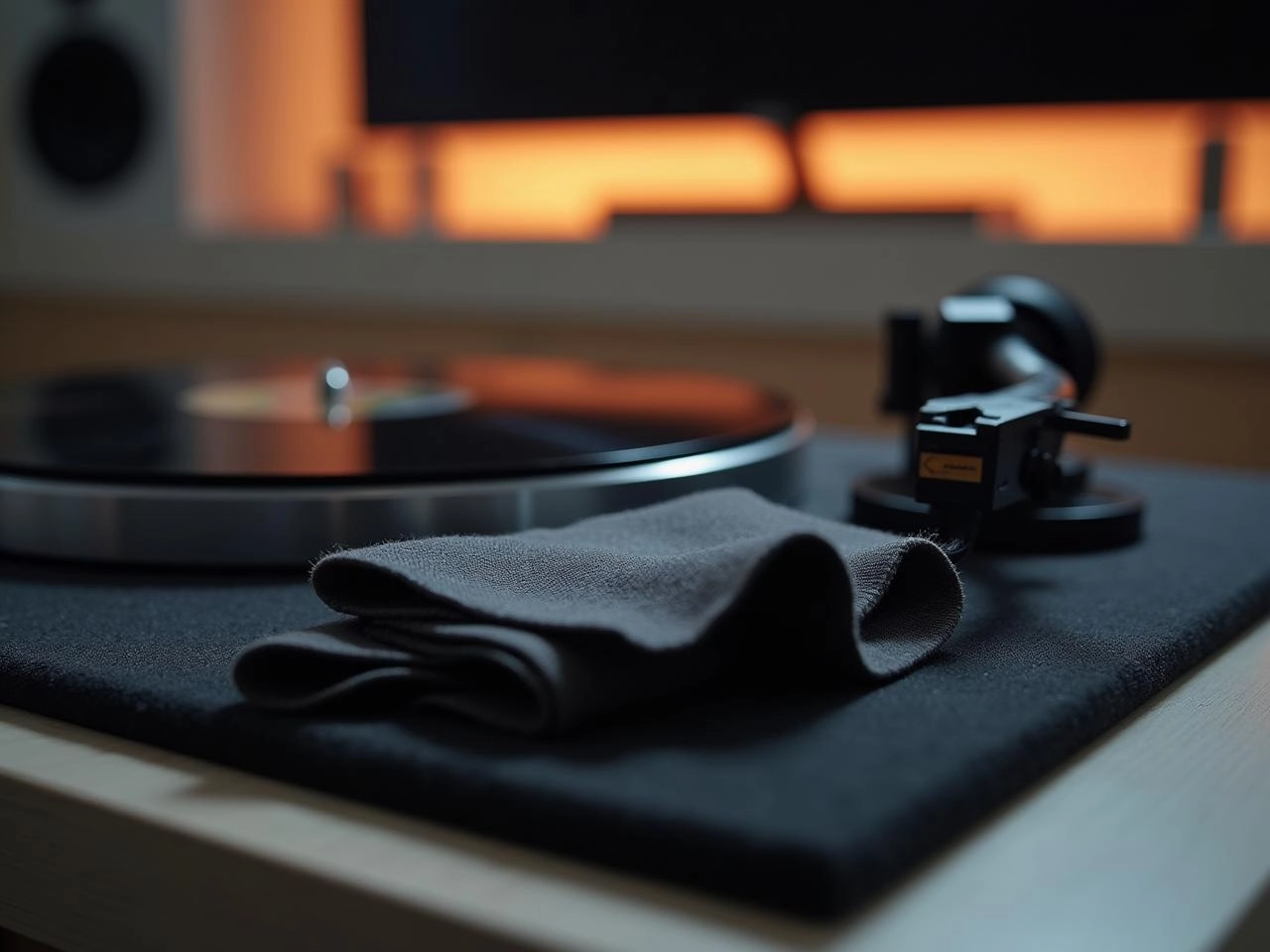Your turntable isolation mat is a critical component for achieving optimal sound, but neglecting its maintenance can degrade its performance. It functions by absorbing micro-vibrations, and over time, dust and oils can accumulate, hindering its ability to dissipate resonance. Keeping it clean is a simple process that directly preserves the integrity of your audio system.
The Importance of Routine Mat Maintenance
Isolation mats, especially those made from advanced microcell materials, rely on their precise internal structure to convert kinetic energy into minor heat loss, preventing sonic interference. Any foreign material on the surface acts as an unwanted coupler, reducing the mat’s dampening efficiency. Regular, gentle cleaning ensures the mat continues to provide maximum performance against low and mid-to-high frequency resonance.
Daily and Weekly Care Practices
- Dusting: Before each listening session, use an anti-static carbon fiber brush to lightly dust the mat’s surface. This prevents dust particles from being pressed into the material by the turntable or platter.
- Handling: Always handle the mat by its edges. Oils and residues from your hands can leave behind a film that attracts dust and degrades the material over time.
Deep Cleaning Your Isolation Mat
A deeper clean is recommended every three to six months, or whenever you notice visible dust or smudges that resist simple dusting. Avoid harsh chemicals, which can damage the microcell structure of engineered materials.
Step-by-Step Cleaning Process
- Preparation: Power down your turntable and gently lift the mat away from the platter, placing it on a clean, flat, non-abrasive surface.
- Damp Wipe: Use a lint-free, high-quality microfiber cloth slightly dampened with distilled water.
- Gentle Application: Wipe the mat’s surface using very light pressure in smooth, circular motions. The goal is to lift residue, not scour the material.
- Drying: Allow the mat to air-dry completely on a clean surface. Do not expose it to direct sunlight or use forced heat, as this can cause warping or material degradation.
| Cleaning Do’s | Cleaning Don’ts |
| Use distilled water. | Use alcohol or solvent-based cleaners. |
| Use a clean microfiber cloth. | Use abrasive sponges or paper towels. |
| Always air dry completely. | Expose to direct sunlight or heat. |
Longevity and Storage Best Practices
When not in use, store your mat flat in a cool, dry place. Avoid stacking heavy objects on it, which could compress the microcell structure and permanently diminish its resonance absorption capabilities. With proper care, a high-quality isolation mat can last for many years, maintaining its acoustic integrity.
Q&A: Mat Care Quick Answers
Q: Can I use rubbing alcohol to clean my mat? A: No, avoid using rubbing alcohol or other solvents. They can break down the specialized materials, compromising the mat’s engineered performance.
Q: How often should I replace my isolation mat? A: A high-quality mat should not need replacing unless it is physically damaged (cracked, torn, or permanently compressed). Routine cleaning ensures maximum lifespan.
Q: Does temperature affect the mat’s performance? A: Extreme temperatures can affect any material. Keep your turntable setup in a temperature-controlled environment to ensure optimal, consistent mat performance.
